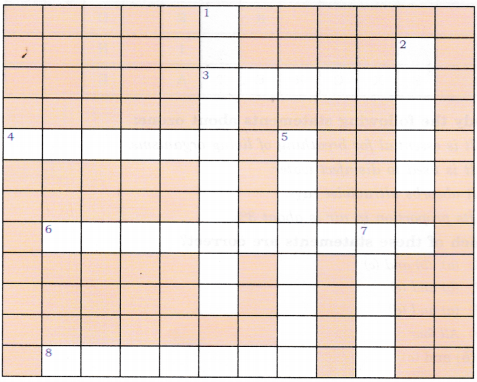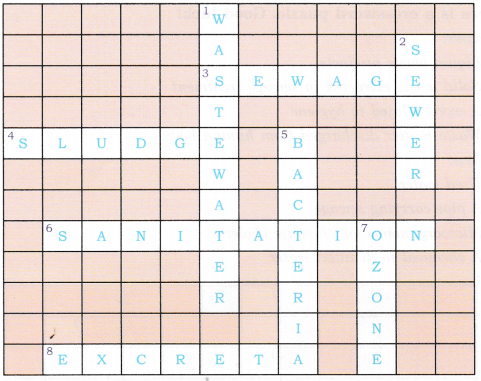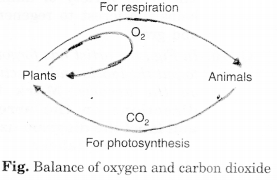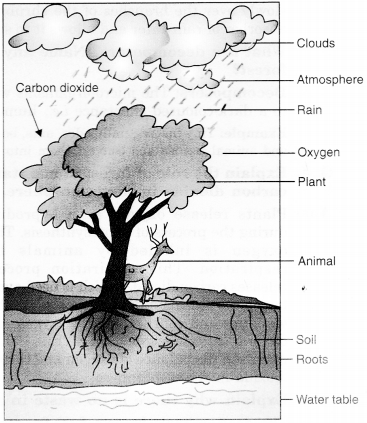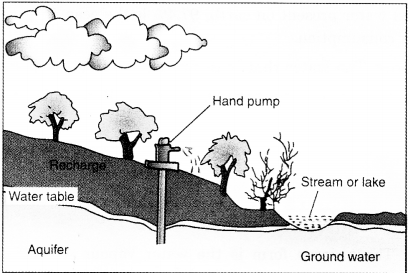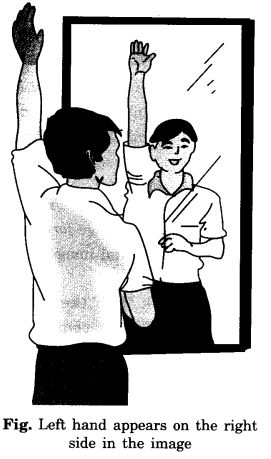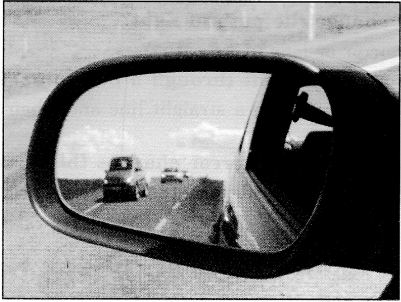NCERT Solutions for Class 8 Hindi Bharat ki Khoj Chapter 1 भारत की खोज are part of NCERT Solutions for Class 8 Hindi. Here we have given NCERT Solutions for Class 8 Hindi Bharat ki Khoj Chapter 1 भारत की खोज.
| Board | CBSE |
| Textbook | NCERT |
| Class | Class 8 |
| Subject | Hindi Bharat ki Khoj |
| Chapter | Chapter 1 |
| Chapter Name | भारत की खोज |
| Number of Questions Solved | 27 |
| Category | NCERT Solutions |
NCERT Solutions for Class 8 Hindi Bharat ki Khoj (Chapter 1 to 9) भारत की खोज
प्रश्न-अभ्यास
(पाठ्यपुस्तक से)
प्रश्न 1. ‘आखिर यह भारत है क्या? अतीत में यह किस विशेषता का प्रतिनिधित्व करता था? उसने अपनी प्राचीन शक्ति को कैसे खो दिया? क्या उसने इस शक्ति को पूरी तरह खो दिया है? विशाल जनसंख्या का बसेरा होने के अलावा क्या आज उसके पास ऐसा कुछ बचा है जिसे जानदार कहा जा सके?’ ये प्रश्न अध्याय दो के शुरुआती हिस्से से लिए गए हैंअब तक आप पूरी पुस्तक पढ़ चुके होंगेआपके विचार से इन प्रश्नों के क्या उत्तर हो सकते हैं? जो कुछ आपने पढ़ा है उसके आधार पर और अपने अनुभवों के आधार पर बताइए
उत्तर :
भारत में विशाल जनसंख्या का बसेरा होने के अलावा अभी बहुत कुछ ऐसा बेचा है, जिसे जानदार कहा जा सकता हैभारत विश्व के प्राचीनतम देशों में से एक हैइसकी सभ्यता एवं संस्कृति प्राचीन एवं समृद्धिशाली हैविश्व की महान सभ्यताओं के नष्ट होने के बाद भी यह अपना अस्तित्व बचाए हुए हैअनेक हमलावरों ने इसे नष्ट करने का प्रयास किया पर वे इससे प्रभावित होकर यहीं के होकर रह गएआज भी भारत की गणना विश्व के विकासशील देशों में की जाती है
प्रश्न 2. आपके अनुसार भारत यूरोप की तुलना में तकनीकी विकास की दौड़ में क्यों पिछड़ गया था?
उत्तर :
मेरे विचार से जिस समय यूरोप में तकनीकी विकास हो रहा था तथा इंग्लैंड में औद्योगिक क्रांति का आरंभ हो चुका था, उस समय भारत पर निरंतर हमले हो रहे थेहमलों के कारण भारत का ध्यान अपना अस्तित्व बचाने, यहाँ के लोगों की सुरक्षा में लगा थासंसाधन होने के बाद भी उसका ध्यान खोजों तथा आविष्कारों से दूर रहा और वह यूरोप की तुलना में पिछड़ गया
प्रश्न 3. नेहरू जी ने कहा कि-”मेरे ख्याल से, हम सब के मन में अपनी मातृभूमि की अलग-अलग तसवीरें हैं और कोई दो आदमी बिलकुल एक जैसा नहीं सोच सकते।’ अब आप बताइए कि
- आपके मन में अपनी मातृभूमि की कैसी तसवीर है?
- अपने साथियों से चर्चा करके पता करो कि उनकी मातृभूमि की तसवीर कैसी है और आपकी और उनकी तसवीर (मातृभूमि की छवि) में क्या समानताएँ एवं भिन्नताएँ हैं?
उत्तर :
- हमारे हृदय में अपनी पावन मातृभूमि की सम्मानजनक, पालन-पोषण करने वाली, विपत्ति में धैर्य का सबक सिखाने वाली तथा ममतामयी तसवीर है
- हमारे साथियों के मन में भी अपनी मातृभूमि के प्रति बहुत ही गहरा लगाव हैवे इसकी सेवा तथा रक्षा के लिए अपना तन-मन-धन अर्पित करने को तत्पर हैंकुछ साथी ऐसे भी हैं जो अवसर मिलने पर विदेशों में जाकर बसना चाहते हैं क्योंकि उन्हें पश्चिमी रहन-सहन और वहाँ के तौर-तरीके पसंद हैं
प्रश्न 4. जवाहरलाल नेहरू ने कहा, “यह बात दिलचस्प है कि भारत अपनी कहानी की इस भोर-बेला में ही हमें एक नन्हें बच्चे की तरह नहीं, बल्कि अनेक रूपों में विकसित सयाने रूप में दिखाई पड़ता है।” उन्होंने भारत के विषय में ऐसा क्यों और किस संदर्भ में कहा है?
उत्तर :
नेहरू जी ने भारत के विषय में ऐसा इसलिए कहा क्योंकि भारतीय सभ्यता एवं संस्कृति पिछले पाँच-दस वर्षों की नहीं हैयह अत्यंत प्राचीन तथा विश्वप्रसिद्ध हैप्राचीनकाल में यह शिक्षा का केंद्र थाभारत पहले से ही गणित, खगोलशास्त्र, ज्योतिष, औषधिविज्ञान, मूर्तिकला तथा अनेक शिल्पकलाओं में विकसित हो चुका था
प्रश्न 5. सिंधु घाटी सभ्यता के अंत के बारे में अनेक विद्वानों के कई मत हैंआपके अनुसार इस सभ्यता का अंत कैसे हुआ होगा, तर्क सहित लिखिए
उत्तर :
सिंधु घाटी की सभ्यता के अंत के बारे में मेरे दो विचार हैं
- सिंधु नदी जो अपने बाढ़ के लिए प्रसिद्ध थीहो सकता है कि इस नदी में भयंकर बाढ़ आयी हो और सिंधु घाटी को भी अपनी चपेट में लेकर सब कुछ नष्ट कर दिया हो
- सिंधु घाटी की सभ्यता में हथियार नहीं मिलने से पता चलता है कि यह सभ्यता शांतिप्रिय थीशायद इस सभ्यता का अंत बाहरी आक्रमण से हो गया होगा
प्रश्न 6. उपनिषदों में बार-बार कहा गया है कि- “शरीर स्वस्थ हो, मन स्वच्छ हो और तन-मन दोनों अनुशासन में रहेंआप अपने दैनिक क्रिया-कलापों में इसे कितना लागू कर पाते हैं? लिखिए
उत्तर :
मैं अपने दैनिक क्रिया-कलापों में भी अनुशासन का पालन करने की कोशिश करता हूँइसके अलावा तन तथा मन स्वस्थ रखने के लिए प्रात: जल्दी उठना, व्यायाम करना, योग कक्षाओं में जाना, नियमित रूप से व्यायामशाला (जिम) जाना आदि करता हूँइसके अलावा अपना काम समय पर करने का प्रयास करता हूँ।
प्रश्न 7. नेहरू जी ने कहा कि-“इतिहास की उपेक्षा के परिणाम अच्छे नहीं हुए।” आपके अनुसार इतिहास लेखन में क्या-क्या शामिल किया जाना चाहिए? एक सूची बनाइए और उस पर कक्षा में अपने साथियों और अध्यापकों से चर्चा कीजिए
उत्तर :
अतीत वह आईना होता है, जिसके द्वारा हम उसके अच्छे-बुरे का ज्ञान प्राप्त करते हैं ताकि हम गलतियों से बच सकेंइससे हम अपना भविष्य सँवार सकते हैंमेरे विचार से इतिहास लेखन में अभिलेखों, शिलालेखों, खंडहरों के अवशेष, तत्कालीन साहित्य (यदि उपलब्ध हो), विदेशी यात्रियों के यात्रा विवरण, सिक्के आदि की जानकारी को आधार बनाना चाहिएइसके अलावा उस समय की सामाजिक, धार्मिक और आर्थिक स्थितियों का ध्यान रखना चाहिए
प्रश्न 8. “हमें आरंभ में ही एक ऐसी सभ्यता और संस्कृति की शुरुआत दिखाई पड़ती है जो तमाम परिवर्तनों के बावजूद आज भी बनी हुई है।” आज की भारतीय संस्कृति की ऐसी कौन-कौन सी बातें/चीजें हैं जो हजारों साल पहले से चली आ रही हैं? आपस में चर्चा करके पता लगाइए
उत्तर :
भारतीय संस्कृति में हजारों साल से चली आने वाली अनेक चीजें/बातें हैंजैसे-सत्य, अहिंसा, परोपकार एवं त्याग की भावना, आस्तिकता, अतिथि सत्कार की भावना, गुरुजनों का आदर, जन्मभूमि से प्यार, अनेकता में छिपी एकता, अनेक पुरानी मान्यताएँ तथा रीति-रिवाज आदि
प्रश्न 9. आपने पिछले साल (सातवीं कक्षा में) बाल महाभारत कथा पढ़ीभारत की खोज में भी महाभारत के सार को सूत्रबद्ध करने का प्रयास किया गया है दूसरों के साथ ऐसा आचरण नहीं करो जो तुम्हें खुद अपने लिए स्वीकार्य न हो।” आप अपने साथियों से कैसे व्यवहार की अपेक्षा करते हैं और स्वयं उनके प्रति कैसा व्यवहार करते हैं? चर्चा कीजिए
उत्तर :
मैं अपने साथियों से अपेक्षा करता हूँ कि वे मेरे साथ अच्छा व्यवहार करेंवेहमेशा प्रेम, मित्रता तथा सद्भाव रखेंवे अपने व्यवहार में स्वार्थपरता न लाएँआवश्यकता या मुसीबत के समय एक दूसरे की खुलकर मदद करेंमैं भी अपने साथियों के साथ वह व्यवहार नहीं करता जो मुझे अपने साथ पसंद नहींमैं कोशिश करता हूँ कि अपने व्यवहार से साथियों का दिल न दुखाऊँ।
प्रश्न 10. प्राचीन काल से लेकर आज तक राजा या सरकार द्वारा जमीन और उत्पादन पर ‘कर’ लगाया जाता रहा हैआजकल हम किन-किन वस्तुओं और सेवाओं पर कर देते हैं, सूची बनाइए।
उत्तर :
आजकल हम निम्नलिखित वस्तुओं और सेवाओं पर कर देते हैं-आय पर आयकर, उत्पादन पर उत्पादशुल्क, वस्तुओं की बिक्री पर बिक्रीकर, आयात निर्यात पर कर, सीमाशुल्क, गृह कर, वैट आदि
प्रश्न 11.
- प्राचीन समय में विदेशों में भारतीय संस्कृति के प्रभाव के दो उदाहरण बताइए
- वर्तमान समय में विदेशों में भारतीय संस्कृति के कौन-कौन से प्रभाव देखे जा सकते हैं? अपने साथियों के साथ मिलकर एक सूची बनाइए(संकेत-खान-पान, पहनावा, फिल्में, हिंदी, कंप्यूटर, टेलीमार्केटिंग)
उत्तर :
- प्राचीन समय में विदेशों में भारतीय संस्कृति का प्रभाव पड़ाविदेशी यात्रियों तथा यहाँ से वापस गए हमलावरों द्वारा हिंदू धर्म, बौद्धधर्म को प्रचार, ज्ञान, विज्ञान, यहाँ की खाने-पीने की अनेक वस्तुओं का वहाँ मिलना, वहाँ भारतीय वस्त्रों का चलन आदि से भारतीय संस्कृति का प्रभाव पड़ा
- वर्तमान समय में योग, वेदांत, धर्म दर्शन, धार्मिक सहनशीलता, ललितकलाएँ, भारतीय परिधान, कंप्यूटर, खान-पान आदि क्षेत्रों में भारत ने विदेशों पर असर छोड़ा है
प्रश्न 12. पृष्ठ संख्या 34 पर कहा गया है कि जातकों में सौदागरों की समुद्री यात्राओं यातायात के हवाले भरे हुए हैंविश्व/भारत के मानचित्र में उन स्थानों/रास्तों को खोजिए जिनकी चर्चा इस पृष्ठ पर की गई है
उत्तर :
भारत का व्यापार दक्षिण पूर्वी एशिया अर्थात् इंडोनेशिया, जावा, बाली, सुमात्रा, चीन, पश्चिम में मिस्र से रोम तक फैला थाउत्तर में अफगानिस्तान तथा ईरान जैसे देशों से भी भारतीयों के संबंध थेनोट-छात्र स्वयं विश्व के मानचित्र पर इस स्थानों को खोजें
प्रश्न 13. कौटिल्य के अर्थशास्त्र में अनेक विषयों की चर्चा है, जैसे, “व्यापार और वाणिज्य, कानून और न्यायालय, नगर-व्यवस्था, सामाजिक रीति-रिवाज, विवाह और तलाक, स्त्रियों के अधिकार, कर और लगान, कृषि, खानों और कारखानों को चलाना, दस्तकारी, मंडियाँ, बागवानी, उद्योग-धंधे, सिंचाई और जलमार्ग, जहाज और जहाजरानी, निगमें जनगणना, मत्स्य-उद्योग, कसाईखाने, पासपोर्ट और जेल-सब शामिल हैंइसमें विधवा विवाह को मान्यता दी गई है और विशेष परिस्थितियों में तलाक को भी।”वर्तमान में इन विषयों की क्या स्थिति है? अपनी पसंद के किन्हीं दो-तीन विषयों पर लिखिए।
उत्तर :
वर्तमान में इन विषयों की स्थिति में पर्याप्त सुधार हुआ हैकुछ की स्थिति तो बिल्कुल ही बदल गई हैइनमें से कुछ विषयों की स्थिति इस प्रकार है
- सामाजिक रीति-रिवाज – भारत विभिन्न जातियों, धर्मों, संप्रदायों, मतों को मानने वालों का पुंज हैयहाँ लोगों में भाषा, धर्म, प्रांत, खान-पान, पहनावा आदि संबंधी विविधता दिखाई पड़ती है परंतु वे एकता की अदृश्य डोर से बँधे हैं और अंततः भारतीय हैंयहाँ ग्रामीण समाज में आज भी अनेक कुरीतियाँ-परदा-प्रथा, बाल-विवाह, रूढ़िवादिता, धार्मिक अंधविश्वास, स्वर्थ, भाई-भतीजावाद, भ्रष्टाचार आदि स्पष्ट रूप से दिखाई देती हैं
- कृषि – कृषि प्रधान देश की ग्रामीण जनता के जीवनयापन का प्रमुख साधन कृषि हैकृषि की दशा में बहुत सुधार हुआ हैउन्नतशील बीज, खाद, कृषि यंत्र, सिंचाई के साधनों के विकास से कृषि की प्रति हेक्टेयर उपज बढ़ी हैग्रामीण क्षेत्रों में कुछ ऐसे भी गरीब किसान हैं जिनकी दशा दयनीय है इसके अलावा बढ़ती जनसंख्या के कारण कृषि की उपज हर वर्ष कम पड़ती जाती है
- स्त्रियों के अधिकार – स्त्रियों की दशा में आजादी के बाद बहुत सुधार हुआ हैउनमें शिक्षा का प्रचार-प्रसार होने से आत्मविश्वास में वृद्धि तथा आर्थिक समृद्धि व स्वतंत्रता बढ़ी है परदा-प्रथा, बाल विवाह आदि में कमी आई हैरोजगार तथा नौकरियों में वे पुरुषों के साथ कंधे से कंधा मिलाकर चल रही हैं
प्रश्न 14. आजादी से पहले किसानों की समस्याएँ निम्नलिखित थीं-गरीबी, कर्ज, निहित स्वार्थ, जमींदार, महाजन, भारी लगान और कर, पुलिस के अत्याचार…’ आपके विचार से आजकल किसानों की समस्याएँ कौन-कौन सी हैं?
उत्तर :
भारतीय किसानों की जोत का दिन प्रतिदिन छोटा होता जाना, खाद, उन्नत बीज का समय पर न मिल पाना, कृषि के उपकरणों का महँगा होना, उपज का भरपूर मूल्य न मिल पाना, प्राकृतिक आपदाएँ-बाढ़, सूखा आदि के कारण फसल नष्ट होना आदि प्रमुख समस्या हैकृषि से पर्याप्त आय न होने के कारण उनमें गरीबी, ऋणग्रस्तता आदि समस्याएँ भी हैंसरकारी सहायता का समय पर उन तक न पहुँच पाना या उनको पूरी मात्रा में न मिल पाना उनकी गरीबी को बढ़ाता है
प्रश्न 15. सार्वजनिक काम राजा की मर्जी के मोहताज नहीं होते, उसे खुद हमेशा इनके लिए तैयार रहना चाहिए।” ऐसे कौन-कौन से सार्वजनिक कार्य हैंजिन्हें आप बिना किसी हिचकिचाहट के करने को तैयार हो जाते हैं?
उत्तर :
बहुत से ऐसे सार्वजनिक कार्य हैं जो हम बिना किसी हिचकिचाहट के करने को तैयार हो जाते हैंउनमें से कुछ निम्नलिखित हैं
- अपनी कॉलोनी या आसपास की सुरक्षा का ध्यान रखना।
- शाम के समय आसपास के गरीब बच्चों को नि:शुल्क पढ़ाना
- आस-पास खाली पड़ी जमीन में वृक्षारोपण करना
- गरीब बच्चों के लिए किताब-कापियाँ आदि का वितरण करना
- अपने आसपास की सफाई का ख्याल रखना
- उद्यानों, पार्को को नष्ट होने के बचाने का प्रयास तथा सरकारी संपत्ति की देख-रेख करना
प्रश्न 16. महान सम्राट अशोक ने घोषणा की कि वह प्रजा के कार्य और हित के लिए ‘हर स्थान पर और हर समय हमेशा उपलब्ध हैंहमारे समय के शासक/ लोक-सेवक इस कसौटी पर कितना खरा उतरते हैं? तर्क सहित लिखिए
उत्तर :
भारत जैसे लोकतांत्रिक देश में यह बड़े दुख की बात है कि हमारे लोक सेवक अर्थात नेताओं की करनी-कथनी में कोई समानता नहीं हैवे चुनाव के दिनों में आम जनता के कल्याण के लिए लंबी-चौड़ी घोषणाएँ तथा वायदे करते हैं, पर एक बार जीत जाने के बाद वे विशिष्ट बन जाते हैं तथा अपने किए वायदों को भूलकर भी पूरा करने नहीं आतेदुबारा चुनाव आने पर ही वे जनता के बीच आते हैं और चुनाव जीतने के बाद अपनी स्थिति सुधारने के लिए धनलोलुपता, भ्रष्टाचार, रिश्वतखोरी आदि में आकंठ डूब जाते हैं
प्रश्न 17. ‘औरतों के परदे में अलग-थलग रहने से सामाजिक जीवन के विकास में रुकावट आईकैसे?
उत्तर :
औरतों के पर्दे में रहने से यानी अलग-थलग रहने से सामाजिक जीवन के विकास में बाधा उत्पन्न हुईउन्हें शिक्षा से वंचित रहना पड़ावे जीवन में कोई भी निर्णय लेने के लिए स्वतंत्र न थींवे हर काम के लिए पुरुषों पर आश्रित थींपर्दा-प्रथा के कारण उनका स्वास्थ्य प्रभावित हुआइससे सामाजिक सहभागिता में भी कमी आई पुरुषों के अधिकार तथा वर्चस्व बढ़ते गएइससे समाज के विकास में रुकावट आई
प्रश्न 18. मध्यकाल के इन संत रचनाकारों की अनेक रचनाएँ अब तक आप पढ़ चुके होंगेइन रचनाकारों की एक-एक रचना अपनी पसंद से लिखिए
- अमीर खुसरो
- कबीर
- गुरु नानक
- रहीम
उत्तर :
मध्यकाल के इन संत रचनाकारों ने अपनी रचनाओं द्वारा सामाजिक चेतना फैलाने तथा कुरीतियाँ दूर करने का प्रयास किया हैइनकी रचनाओं से समाज में नई ऊर्जा का संचार हुआ हैइन रचनाकारों की एक-एक रचना निम्नलिखित है
1. अमीर खुसरो – अपनी पहेलियों और मुकरियों के लिए आज भी प्रसिद्ध हैं
रचना –
वह आवे तो शादी होय
उस बिन दूजा और न कोय,
मीठे लागे उसके बोल,
क्यों सखी साजन?
न सखी ढोल।
2. कबीर – कबीर उच्चकोटि के समाज सुधारक थे, जिन्होंने समाज में व्याप्त तत्कालीन कुरीतियों पर जमकर प्रहार किया
रचना –
मोको कहाँ ढूढ़े बंदे, मैं तो तेरे पास में।
ना मैं देवल ना मैं मस्जिद, ना काबे कैलास में
ना तो कौने क्रियाकर्म में, नाहीं योग बैराग में।
खोजी होय तो तुरतै मिलिहौं, पल भर की तलास में।
कहैं कबीर सुनों भई साधो, सब स्वाँसों की स्वाँस में।
3. गुरुनानक
रचना –
चारि नदी अगनी असराला
कोई गुरुमुखि बुझे सबदि निराला।
साकत दुरमति डूबहिं दाझहिं।
गुरि राखे हरि लिव राता है।
4. रहीम
रचना –
रहिमन यहि संसार में सबसे मिलियो धाइ।
ना जाने केहि भेस में नारायण मिलि जाई॥
प्रश्न 19. बात को कहने के तीन प्रमुख तरीके अब तक आप जान चुके होंगे
- अभिधा
- लक्षणा
- व्यंजना
बताइए, नेहरू जी का निम्नलिखित वाक्य इन तीनों में से किसका उदाहरण है? यह भी बताइए कि आपको ऐसा क्यों लगता है? “यदि ब्रिटेन ने भारत में यह बहुत भारी बोझ नहीं उठाया होता (जैसा कि उन्होंने हमें बताया है) और लंबे समय तक हमें स्वराज्य करने की वह कठिन कला नहीं सिखाई होती, जिससे हम इतने अनजान थे, तो भारत न केवल अधिक स्वतंत्र और अधिक समृद्ध होता…. बल्कि उसने कहीं अधिक प्रगति की होती।”
उत्तर :
उपर्युक्त वाक्य जो नेहरू जी द्वारा कहे गए हैं, उनमें व्यंजना हैअंग्रेजों ने वास्तव में हमारा बोझ उठाया नहीं बल्कि और भी थोपा था, जिससे मुक्त होने में हमें बहुत लंबा समय लगाना पड़ा
प्रश्न 20. “नई ताकतों ने सिर उठाया और वे हमें ग्रामीण जनता की ओर ले गईपहली बार एक नया और दूसरे ढंग का भारत उन युवा बुद्धिजीवियों के सामने आया…” आपके विचार से आजादी की लड़ाई के बारे में कही गई ये बातें किस नई ताकत’ की ओर इशारा कर रही हैं? वह कौन व्यक्ति था और उसने ऐसा क्या किया जिसने ग्रामीण जनता को भी आजादी की लड़ाई का सिपाही बना दिया?
उत्तर :
इस वाक्य में ‘नई ताकत’ मध्यम वर्ग में आई राजनीतिक चेतना की ओर संकेत कर रही हैपं. जवाहरलाल नेहरू ही वह व्यक्ति थे, जिन्होंने मध्यम वर्ग में नई ऊर्जा का संचार कियाउन्हें उनके अधिकारों तथा कर्तव्यों के प्रति सजग कियाइससे मध्यम वर्ग में राजनीतिक चेतना जाग उठी और यह वर्ग भारत की आजादी के लिए सजग हो उठाइससे यह वर्ग एकजुट होकर आजादी की लड़ाई का सिपाही बन गया
प्रश्न 21. भारत माता की जय’-आपके विचार से इस नारे में किसकी जय की बात कही जाती है? अपने उत्तर का कारण भी बताइए
उत्तर :
भारत माता की जय’ नारे में भारत की पावन भूमि, नदियाँ, पहाड़, वन,
झरने, पशु-पक्षी तथा यहाँ रहने वाले सभी मनुष्यों के जय की बात कही गई हैकारण यह है कि इन्हीं सबको मिलाकर भारत माता की तसवीर पूरी होती
हैयह भारत माता किसी स्थान विशेष की भूमि का नाम नहीं है
प्रश्न 22.
- भारत पर प्राचीन काल से ही अनेक विदेशी आक्रमण होते रहेउनकी सूची बनाइएसमय क्रम में बनाएँ तो और भी अच्छा रहेगा
- आपके विचार से भारत में अंग्रेजी राज्य की स्थापना इससे पहले के आक्रमण से किस तरह अलग है?
उत्तर :
- भारत पर होने वाले आक्रमणों को निम्नलिखित रूप में सूचीबद्ध किया जा सकता है
- आर्यों का आक्रमण
- तुर्की शासकों का आक्रमण
- अफगानियों का आक्रमण
- मंगोलों का आक्रमण
- मुगलों का आक्रमण
- अंग्रेजों (ब्रिटिश) का आक्रमण
- भारत में अंग्रेजी शासन की स्थापना से पूर्व जिन विदेशी जातियों ने आक्रमण किया, वे हमलावर के रूप में आए तथा उन्होंने यहाँ की अपार धन संपदा को लूटाजन-धन, मंदिर आदि की अपूरणीय क्षति पहुँचाई और वापस चले गएउनमें कुछ यहीं बसकर यहीं के हो गएअंग्रेज भारत में व्यापारी बनकर आएभारतीयों को व्यापार के बहाने लूटकर यहाँ की सत्ता पर कब्जा किया और भारतवासी अपने ही देश में गुलाम बनकर रह गए
प्रश्न 23.
- अंग्रेजी सरकार शिक्षा के प्रसार को नापसंद करती थीक्यों?
- शिक्षा के प्रसार को नापसंद करने के बावजूद अंग्रेजी सरकार को शिक्षा के बारे में थोड़ा-बहुत काम करना पड़ाक्यों?
उत्तर :
- अंग्रेजी सरकार शिक्षा के प्रसार को इसलिए नापसंद करती थी क्योंकि अंग्रेजों को डर था कि भारतीय पढ़-लिखकर जागरूक बन जाएँगेउनमें नई चेतना तथा अपनी आजादी के प्रति लगाव पैदा होगाजिसकी वे माँग करेंगे, ऐसे में उन पर (भारतीयों पर) शासन करना कठिन हो जाएगा
- अंग्रेजी सरकार को शिक्षा के बारे में थोड़ा-बहुत सोचना पड़ा क्योंकि
- वे अपना काम कराने के लिए कम वेतन पर काम करने वाले क्लर्क तैयार कर सकें
- भारतीय को शिक्षित करके ही वे उन्हें पश्चिमी सभ्यता से प्रभावित कर सकते थे
प्रश्न 24. ब्रिटिश शासन के दौर के लिए कहा गया कि-‘नया पूँजीवाद सारे विश्व में जो बाजार तैयार कर रहा था उससे हर सूरत में भारत के आर्थिक ढाँचे पर प्रभाव पड़ना ही था।” क्या आपको लगता है कि अब भी नया पूँजीवाद पूरे विश्व में जो बाजार तैयार कर रहा है, उससे भारत के आर्थिक ढाँचे पर प्रभाव पड़ रहा है? कैसे?
उत्तर :
अब भी नया पूँजीवाद पूरे विश्व में जो बाजार तैयार कर रहा है, उससे नि:संदेह भारत के आर्थिक ढाँचे पर प्रभाव पड़ रहा हैइस पूँजीवाद और तैयार बाजार से वर्तमान पीढ़ी किसी भी तरह से या कोई भी साधन अपनाकर धन कमाने की लालसा रखती हैइससे समाज में अमीरीगरीबी की खाई बढ़ रही हैधनी और धनी तथा गरीब और भी गरीब होते जा रहे हैंइसके अलावा युवा पीढ़ी को इस बाजार में पश्चिमी या विदेशी वस्तुएँ आसानी से मिल रही हैंऐसे में स्वदेशी वस्तुओं से उनका मोहभंग हो रहा हैइससे स्वदेशी उद्योग प्रभावित हो रहा है।
प्रश्न 25. गांधीजी के दक्षिण अफ्रीका से लौटने पर निम्नलिखित में किस तरह का बदलाव आया, पता कीजिए
- कांग्रेस संगठन में
- लोगों में विद्यार्थियों, स्त्रियों, उद्योगपतियों आदि में
- आजादी की लड़ाई के तरीकों में।।
- साहित्य, संस्कृति, अखबार आदि में
उत्तर :
गांधीजी के दक्षिण अफ्रीका से लौटने पर निम्नलिखित रूप में बदलाव आया
- कांग्रेस संगठन में-गांधीजी के कांग्रेस में आने से संगठन की मजबूती बढ़ीइसमें किसान एवं मजदूर वर्ग भी शामिल होकर नए जोश के साथ कार्य करने लगे
- लोगों में विद्यार्थियों, स्त्रियों, उद्योगपतियों आदि में-गांधीजी के कांग्रेस में आते ही विश्वविद्यालय के विद्यार्थी इसमें शामिल हो गएअनेक स्त्रियाँ तथा उद्योगपति उत्साहित होकर ब्रिटिश सरकार के विरुद्ध आवाज उठाने लगे
- आजादी की लड़ाई के तरीकों में ब्रिटिश सरकार के खिलाफ लड़ाई में गांधीजी ने सत्य और अहिंसा को प्रमुख हथियार बनायाउन्होंने सविनय अवज्ञा आंदोलन तथा बातचीत के माध्यम से समस्याएँ सुलझाने
को प्राथमिकता दी - साहित्य, संस्कृति, अखबार आदि में गांधी जी के जुड़ने के बाद साहित्य, संस्कृति और अखबार में छपी ब्रिटिश सरकार विरोधी खबरों से जनमानस सजग हो उठाअंग्रेजों की दमन नीति की खबरें अखबारों में प्रमुखता से छपने लगींइस सरकार की सच्चाई का पता लगते ही लोगों में अपनी मातृभूमि की स्वतंत्रता के प्रति ललक जाग उठी
प्रश्न 26. “अकसर कहा जाता है कि भारत अंतर्विरोधों का देश है।” आपके विचार से भारत में किस-किस तरह के अंतर्विरोध हैं? कक्षा में समूह बनाकर चर्चा कीजिए(संकेतः अमीरी-गरीबी, आधुनिकता-मध्ययुगीनता, सुविधा-सपन्न-सुविधा विहीन आदि)
उत्तर :
इसमें कोई दो राय नहीं कि भारत अंतर्विरोधों का देश है यहाँ सकारात्मक तथा नकारात्मक पक्ष साथ-साथ चलते रहते हैंभारत में कुछ लोग बहुत ही धनवान हैं जो ऐशो-आराम एवं विलासिता का जीवन जी रहे हैंजबकि कुछ इतने निर्धन हैं कि वे पेट भर भोजन भी नहीं पाते हैंयहाँ कुछ लोग आधुनिकता में जी रहे हैं तो कुछ अब भी मध्ययुगीनता में जी रहे हैं। कुछ लोग अपने जीवन में नाना प्रकार की सुविधाओं के माध्यम से उत्तम जीवन जी रहे हैं तो ऐसे लोगों की भी कमी नहीं है जो सुविधा विहीन हैं तथा वे निम्न स्तरीय जीवन जीने को विवश हैं।
प्रश्न 27. पृष्ठ संख्या 122 पर नेहरू जी ने कहा है कि-“हम भविष्य की उस ‘एक दुनिया’ की तरफ बढ़ रहे हैं जहाँ राष्ट्रीय संस्कृतियाँ मानव जाति की अंतर्राष्ट्रीय संस्कृति में घुलमिल जाएँगी।”आपके अनुसार उस ‘एक दुनिया में क्या-क्या अच्छा है और कैसे-कैसे खतरे हो सकते हैं?
उत्तर :
नेहरू जी ने ‘एक दुनिया’ कहकर उस दुनिया की ओर संकेत किया है जहाँ प्रगति की ओर बढ़ते हुए हमें समझदारी, ज्ञान, मित्रता, और सहयोग मिलेगा। इससे भारत विश्व में महत्त्वपूर्ण शक्ति बनकर उभरेगा। इस परस्पर सहयोग से कोई देश अलग-थलग नहीं रह पाएगा। एक-दूसरे से मेल-मिलाप बढ़ेगा तथा सभी उन्नति के मार्ग पर आगे बढ़ते जाएँगे। इससे हम भारतीय अच्छे विश्व नागरिक बन सकेंगे। इस मेल-जोल और संस्कृतियों के मिलन के फलस्वरूप पश्चिमी सभ्यता का अंधानुकरण, अधनंगापन, धनलोलुपता आदि बढ़ेगी जिससे भारतीय संस्कृति एवं सभ्यता अप्रभावित नहीं रह सकेगी।
We hope the NCERT Solutions for Class 8 Hindi Bharat ki Khoj Chapter 1 भारत की खोज help you. If you have any query regarding NCERT Solutions for Class 8 Hindi Bharat ki Khoj Chapter 1 भारत की खोज, drop a comment below and we will get back to you at the earliest.
